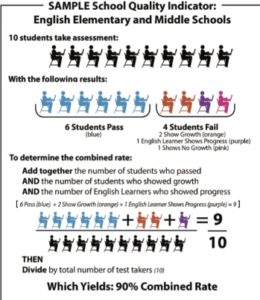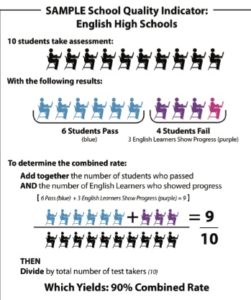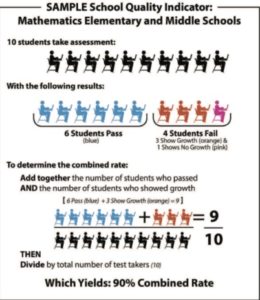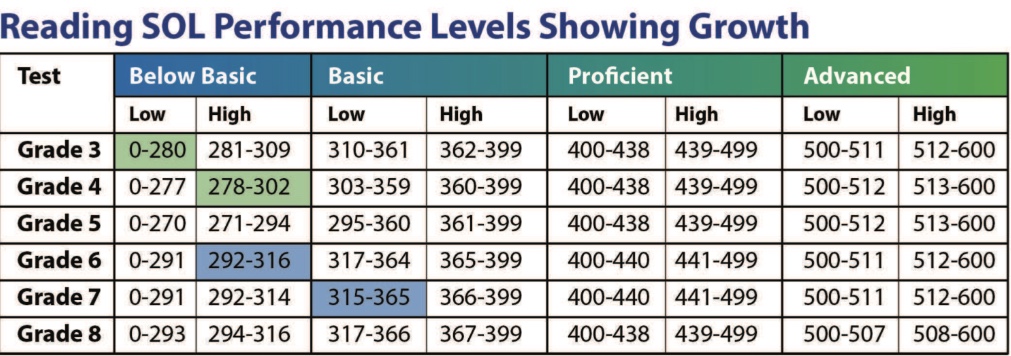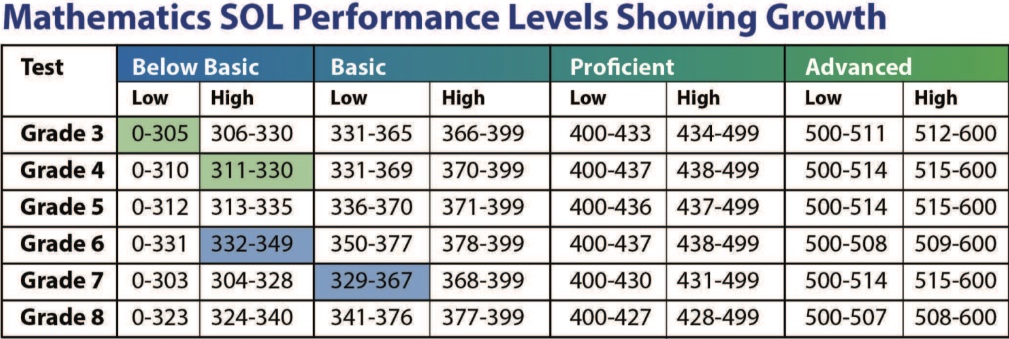The Standards of Learning (SOL) tests have been used in Virginia to determine a school’s accreditation, a one-size fits all policy that leads to educators “teaching to the test” in effort to have students gain a good enough passing rate to ensure a school is fully accredited by the state. Later this month, the Virginia Department of Education will release school accreditation ratings, but this year’s release will feature a revamped system that drastically changes the way schools are judged, fulfilling the Commonwealth’s accountability requirements in a plan approved by the U.S. Department of Education (DOE) earlier this year.
In a report from the Richmond Times-Dispatch, James Lane, Virginia’s superintendent of public instruction, said, “This new system is taking us from labeling schools using the hammer of accreditation to really changing accreditation to a model more like a flashlight, where we’re shining the light on issues — not only the overall pass rate, but deeper into the school with student groups.”
This altered plan is forwarded under the DOE’s newly-mandated Every Student Succeeds Act (ESSA), which replaces the No Child Left Behind Act signed into law during the administration of President George W. Bush.
Beginning this year, elementary and middle schools are being evaluated on proficiency and growth in English reading and writing achievement.
Also measured in high schools:
As well, growth in mathematics classes will be analyzed:
Though, it also includes the progress of students learning English as a second language (ESL).
Performance in math and science is now judged more heavily on an increase in scores throughout the grades – not solely on passing rates of SOL tests in a single year. Furthermore, achievement gaps in English and math will be measured to evaluate schools, along with absenteeism.
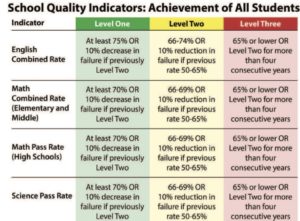 College, career, and civic readiness will also be measured in student engagement, but not until 2021. The metric will determine how many students successfully complete advanced coursework, career and technical education coursework, and work-based and service-based learning.
College, career, and civic readiness will also be measured in student engagement, but not until 2021. The metric will determine how many students successfully complete advanced coursework, career and technical education coursework, and work-based and service-based learning.
Nevertheless, there are three “levels” of achievement in a school’s student population (four in high schools): English combined rate, math combined rate (elementary and middle), math pass rate (high schools), and science pass rate.
In defining the plan’s impact on school accountability, the department says, “By recognizing growth, the revised accreditation standards provide a fairer evaluation of schools serving at-risk students.” The release reads, “Under the previous accreditation system, these schools were subject to being perceived as ‘failing’ even if most students were making progress toward proficiency.”
SOL tests, will still be implemented to determine certain progression in reading and math. “Because students are assessed annually in English reading and mathematics in grades 3-8, it is possible to compare year-to-year performance. A non-passing student is considered to have demonstrated sufficient growth to be included in the combined rate if the student improved by at least one performance level,” the release states.
The new chart shows progression levels for SOL reading scores in grades 3-8:
And math scores:
If a school meets, exceeds, or is near or making “sufficient progress” in all three accreditation indicators in elementary and middle schools (student achievement, achievement gaps, and absenteeism) and four accreditation indicators in high schools (the aforementioned three plus graduation/dropout rate), then it meets the state’s full standards of accreditation.
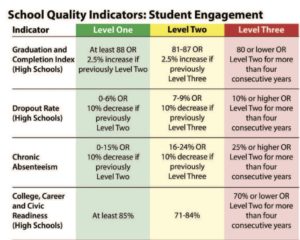 Being below the state standard on any one aspect of the state’s evaluation means a school is accredited with conditions, which requires instituting a plan to improve performance in that area. When a school is denied accreditation, the state and local school board enter into an agreement to try to turn the school around.
Being below the state standard on any one aspect of the state’s evaluation means a school is accredited with conditions, which requires instituting a plan to improve performance in that area. When a school is denied accreditation, the state and local school board enter into an agreement to try to turn the school around.
In 2017, five percent, or 87 schools, in Virginia were denied accreditation. Those within the Richmond Public Schools (RPS) division accounted for over one-fifth of the schools denied accreditation last year.
The ESSA’s new guidelines will also require that reports are drafted on how much money is spent in schools on staff compared with other expenses, a breakdown of how much money a school gets from the federal, state, and local governments, and an analysis of student poverty levels. The analysis is in hope to identity any disparities occurring within the public schools system when it comes to funding levels between different schools.


